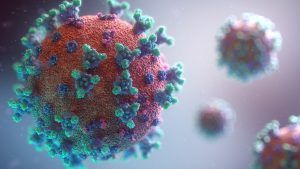
Journalism and media, like all other sectors, have been shaken by the Covid-19 pandemic. But this uncertainty in our industry presents an opportunity to reflect on journalism ethics.
Marginalised groups in South Africa have been left behind by the State’s responses to the pandemic. Likewise, media coverage has been limited mainly to urban areas, leaving those on the geographical and economic periphery with less visibility and voice in the news. Denying coverage to minority groups, even unintentionally, should be seen as a divergence from good journalistic ethics.
Journalistic ethics are much like human rights which the United Nations describes as “universal and inalienable; indivisible; interdependent and interrelated”. Media ethics such as accuracy, fairness, truth, humanity/minimising harm, and objectivity should stand true in any country or form of journalism. Their application should not depend on the subject matter of journalism, given or taken by journalists to subjects they prefer. In addition, ethics are interconnected and depend on each other to be complete. For example, journalism cannot be untruthful and transparent at the same time.
Fulfilling journalistic ethics before the pandemic did not require as much thought and effort as will now be required in an environment where the operating practices of journalists have been upended. Media institutions which have been financially battered by the Covid-19 pandemic are cutting resources to newsrooms, and where resources are being cut so too are ethical practices. Media organisations cannot afford to send journalists out of urban areas to tell the stories of minority groups in remote areas.
A recent research report by the Advancing Rights in Southern (ARISA) Africa consortium, found few media in the region will survive the economic downturn due to a loss of advertising revenue and a loss of income in copy sales. In some instances, media are letting staff go or have reduced the salaries of journalists by up to 50% in a bid to break even. This has translated to newsrooms operating on shoestring budgets, unable to fully operate to serve their information and watchdog role. In many places, this has meant that the stories of minorities are not seeing the light of day.
Journalists too have reported widespread exhaustion and trauma with workloads increased because of the enormity of the Covid-19 story, according to the ARISA report. Journalists are facing may pressures including those imposed by the lockdowns. In addition to these pressures, there is less focus on stories that are not Covid-19 -related, so less attention is being paid by journalists to rural women, youth, indigenous people, people living with disabilities and other marginalised and vulnerable groups.
For women who live in patriarchal societies in rural areas, their right to access and own land is a battle that mostly gets amplified by the media where violations occur like the denial or theft of the land by male village leaders, local chiefs or family members who hold power in rural areas that are mostly governed by traditional structures. However, due to the financial implications of Covid-19 and lockdown restrictions, the media has been unable to travel to rural areas to highlight these infringements.
Indigenous people are being excluded too and they were they not consulted to share their experiences in government-led responses to Covid-19. Their stories are less likely to be told during the pandemic as journalists cannot afford to travel to them. The media appear obsessed with reporting on government statistics and giving voice to government officials rather than on amplifying the effects of Covid-19 on minority groups and the effects of responses of the State on these same marginalized people.
This pandemic has shown that the media is a powerful actor during times of crisis. Those whose voices get amplified in media are more likely to receive sympathy and support from audiences that include governments, donors and philanthropists. If we agree that the media is a watchdog that holds power to account, then it should be easy to see that media coverage of the pandemic that omits minority groups’ voices and experiences is an enabler of a system that suppresses groups who are on the margin. Due to being treated as less visible in media, marginalised groups are likely to be left out of government responses to the pandemic including social safety nets such as social grants and food packages. The government directs its work to those the media shines a light on.
Therefore, media actors need to think carefully about their story angles, consider whose voices and stories are not being shared in their work and any potential harm their work poses to marginalised groups. The journalism ethics of showing humanity and minimising harm means those reporting must first include minority voices and secondly to do so in a way that does not hurt them.
The pandemic has created a valuable opportunity for journalism ethics to take center stage through media refresher courses on ethics as well as in support tailored for media on how to report on minorities. Journalists too need to pause and reflect on current reporting, being aware of and countering any potential for harm to marginalised groups.
Omitting the stories of minority groups whether by design or by default due to the operating environment should be seen as unethical as it paints inaccurate and dishonest pictures. Excluding minorities in the media robs those who are resource-deprived of an opportunity to get their voices heard and deprives them of a chance to get their grievances attended to. Leaving out the voices of minorities harms minorities.







